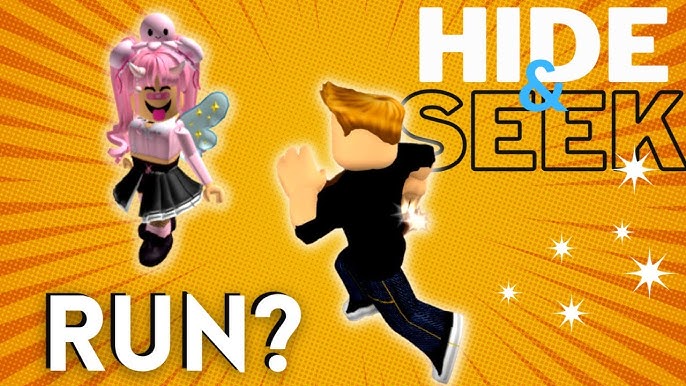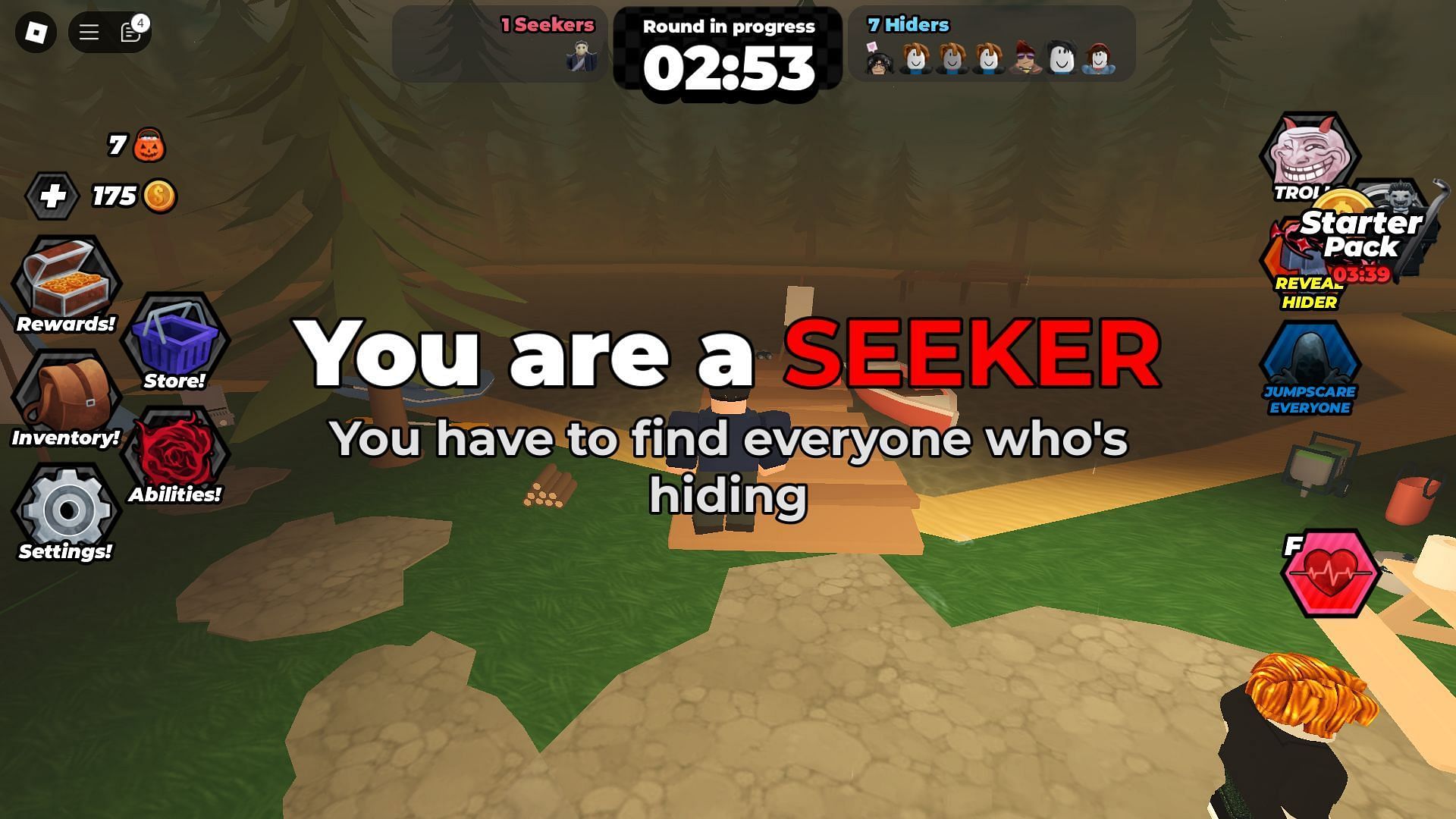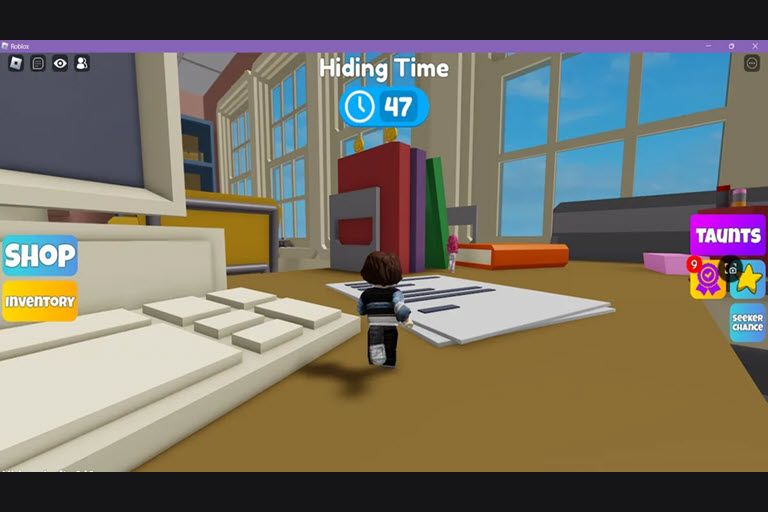Roblox Hide and Seek games offer a classic gameplay experience reinvented with unique maps, power-ups, and game modes. Success in these games depends on cunning stealth, strategic movement, and keen observation, whether you’re cleverly evading the seeker or meticulously hunting down the hiders. The tension of the chase and the satisfaction of a perfect hide or find are central to the fun. This guide provides ten essential tips to help you become an elusive master of disguise or an unstoppable seeker to lead your team to victory in any Roblox Hide and Seek game.
How to Excel in Roblox Hide and Seek Games
#1: Learn the Map’s Layout and Secret Spots
Knowing the map inside and out is the absolute biggest advantage for players on both sides of a Windtrace game. Therefore, you should explore every map thoroughly before jumping into a match. For example, hiders must identify the hard-to-reach ledges, small crevices, and inanimate objects that allow them to blend in seamlessly with the environment. Conversely, seekers need to commit all the common hiding spots and efficient patrolling routes to memory so they can check those areas quickly and maximize their limited hunting time.
#2: Utilize Environmental Blending (as a Hider)

The key to success as a hider is making yourself virtually invisible by expertly blending into the environment. To achieve this, you need to choose spots that complement your character, either by matching its size and color or by letting you appear to be an expected part of the surroundings. For example, you might try sitting on a chair, crouching behind a bush, or positioning yourself next to a large, similarly colored rock. Crucially, once you’re in place, you must stay perfectly still to ensure your disguise holds and you don’t accidentally draw the seeker’s attention.
#3: Strategic Movement and Diversions (as a Hider)

When the inevitable happens and the seeker spots you, your focus shifts to misdirection and time-buying. If you’ve been discovered, don’t panic and run in a straight line; instead, employ unexpected movements. This might mean doubling back on your path, making a sudden leap to an obscure, higher location, or even intentionally leading the seeker on a long chase. By forcing the seeker to commit to pursuing you, you’re buying critical time for the remaining hiders or creating a strong diversion that allows others to reposition safely.
#4: Develop Systematic Searching (as a Seeker)
Random searching is a guaranteed way to waste valuable time as a seeker. Instead, you must approach the map with a methodical strategy to ensure you cover the most ground possible. Therefore, your best bet is to immediately divide the map into systematic sections and clear them out one by one. You should always start with the obvious, high-traffic hiding spots first, and then move outward to the less common and obscure locations. Crucially, don’t just search on a horizontal plane; remember to look up, look down, and check behind all objects to find those elusive, clever hiders.
#5: Listen for Sound Cues (Both Sides)

One of the most powerful and often overlooked tools in any Hide and Seek game is audio. Both seekers and hiders should consistently listen for subtle sound cues, as they frequently betray a player’s position. For instance, a seeker can pinpoint a hidden player by listening for tell-tale footsteps, unique character sounds, or the specific audio cues of an item or ability being used. Conversely, hiders can use these same sounds as an early warning system, since approaching footsteps or the activation of a seeker’s ability gives them a vital few seconds to reposition or prepare for a sprint.
#6: Use Power-Ups or Special Abilities Wisely (if applicable)
Many Hide and Seek games feature items or abilities that grant a crucial temporary advantage, so using them strategically is key to winning. Consequently, you must save these power-ups for the most critical moments, rather than wasting them early on. For example, hiders should deploy invisibility, speed boosts, or morph abilities only when the seeker is right on their tail or a final sprint to victory is needed. Conversely, seekers should utilize abilities like “radar” or “reveal” in the final moments of the game or in sections of the map they haven’t been able to clear, while using their speed boosts to close the gap on a fast-moving, elusive player.
#7: Communicate with Your Team (Both Sides)
Team-based Hide and Seek games are significantly enhanced through shared information, so effective communication is non-negotiable for both sides. As a seeker, you should immediately call out which map sections you’ve completely cleared, or, more importantly, which hider you’re currently chasing. Conversely, hiders need to quietly and precisely communicate the seeker’s current location or the discovery of safe hiding zones to their teammates. This constant flow of data allows the team to coordinate their movements and avoid inefficient searching or accidental capture.
#8: Don’t Stay in One Spot Forever (as a Hider)
Hiders should never treat their initial hiding spot as permanent; staying in one spot too long makes you predictable and vulnerable to a second search. Therefore, you must always be ready to relocate. If you observe the seeker moving far away from your current area, consider subtly moving to a new, equally safe position nearby. By doing this, you drastically reduce the chance of being found if the seeker suddenly decides to circle back and check your area a second time.
#9: Check Common Routes and Exits (as a Seeker)
Effective seekers know that hiders often rely on familiar escape routes and chokepoints to evade capture or reposition. Therefore, when you spot a running hider, do not simply chase directly behind them; this is highly inefficient. Instead, you should immediately cut off their escape by heading straight to the location where they are likely going. By guarding common chokepoints and pre-empting their movement, you force the hider to change direction, exposing them or leading them directly into your trap.
#10: Learn from Each Round (Win or Lose)
Every match, regardless of whether you win or lose, offers valuable new insights into effective hiding and seeking. Consequently, you should always take a moment after a round to reflect on the gameplay. Specifically, analyze where the successful hiders were found or how the clever seekers managed to get evaded. By identifying new hiding patterns, discovering previously unknown spots, and understanding what made the other team successful, you can refine your techniques and immediately apply that knowledge to your next game, improving both of your roles.
🌐 Web & Video References for Roblox Hide and Seek Tips
- YouTube Video: Best Hiding Spots/Tips (Game-Specific):
- Often, creators share videos focusing on specific popular games like “Hide and Seek Extreme” or “Shrink Hide & Seek,” which provide visual demonstrations of advanced hiding spots and map glitches.
- Example Source: Video showcasing IMPOSSIBLE Spots in Roblox Shrink Hide & Seek! (Note: The exact title/link may vary as new content is constantly uploaded.)
- YouTube Video: General Top Lists/Game Reviews:
- These videos often feature a countdown of the “best” or “most fun” games, and usually include general tips that apply across multiple Hide & Seek titles (like using power-ups or teamwork).
- Example Source: TOP 20 Best HIDE AND SEEK GAMES In ROBLOX! (General tips often included)
- Reddit/Forum Discussions (Strategy & Community Tips):
- Community forums like Reddit (r/Roblox) often host discussions where players share advanced, meta-game strategies, like systematic searching patterns or unconventional use of emotes to hide.
- Example Source: A thread discussing Hide and Seek Winning Strategy/General Tips on Reddit (Search for general “Roblox Hide and Seek” tips)
Code Index | Home | Guides | Franchise Games | Roblox Games | About Genshin Impact | Master Genshin Impact | Oculus Resonance Stones | Treasure Compass


